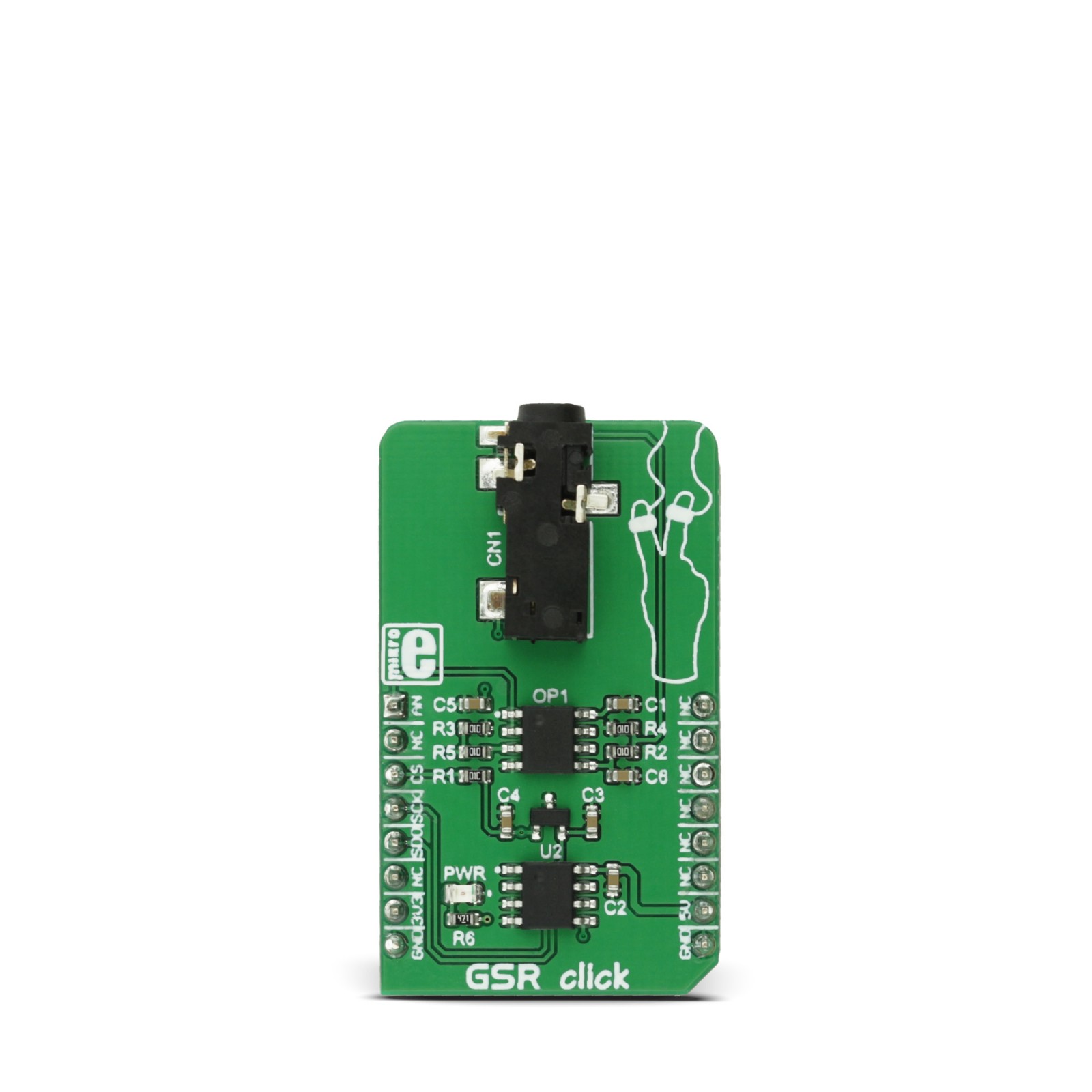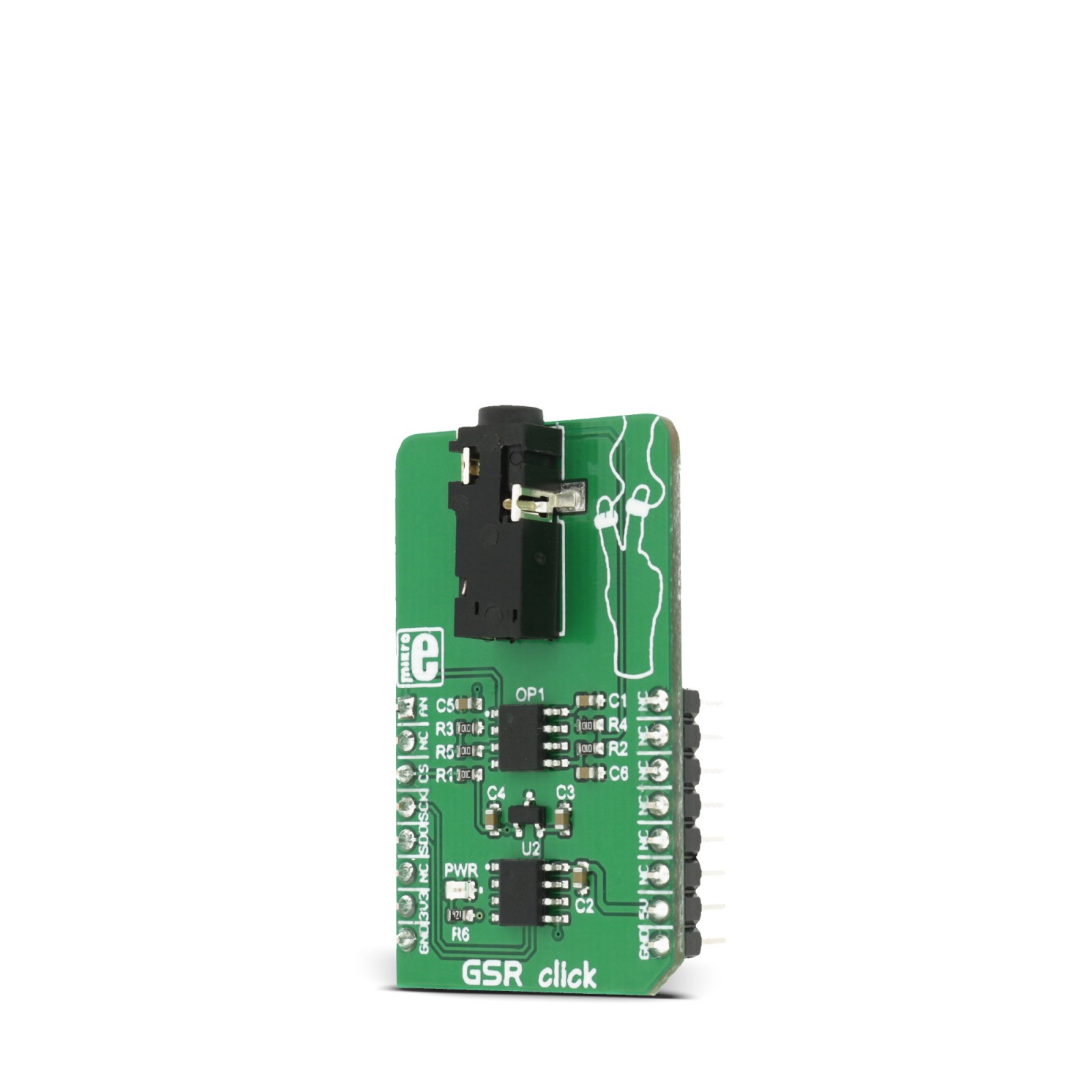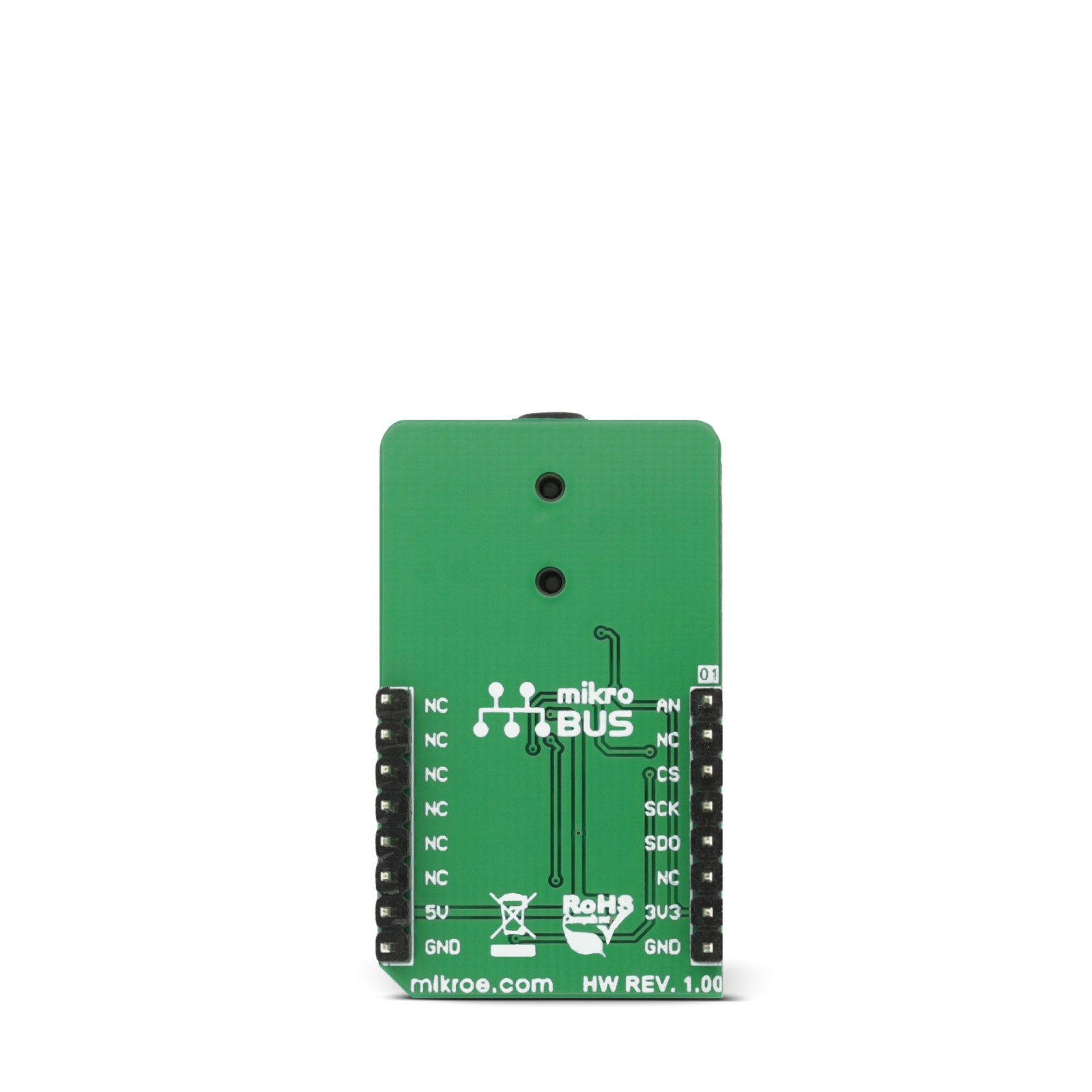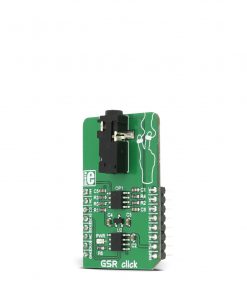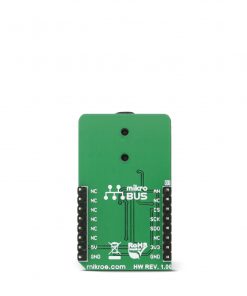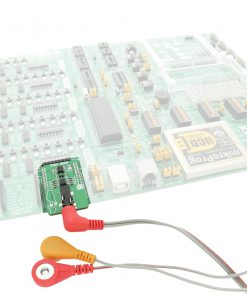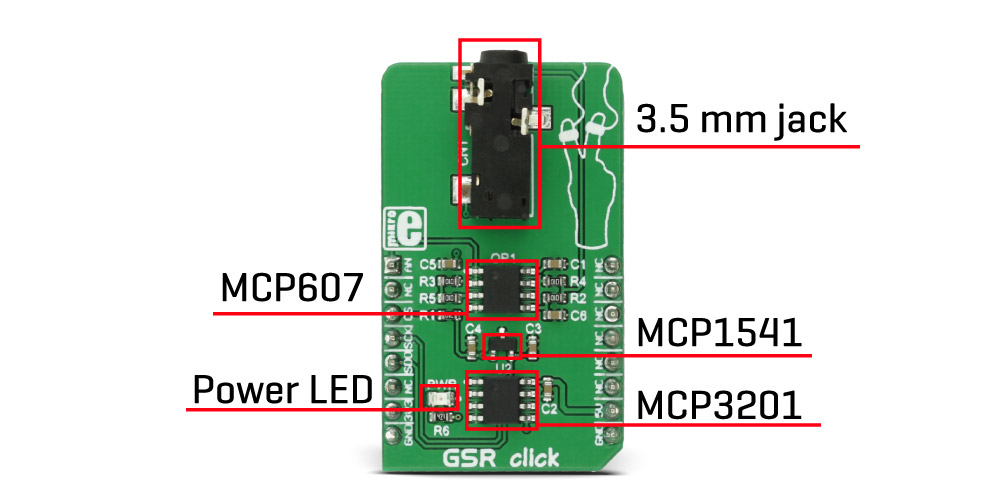GSR Click
R535.00 ex. VAT
GSR click can be used to measure the electrodermal activity (EDA) of the human body, also known as the galvanic skin response (GSR). EDA is actually the property of the human body that causes continuous variation in the electrical characteristics of the skin. EDA monitoring is usually combined with the monitoring of the heart rate, respiratory rate, and blood pressure, giving a complete insight into some of the parameters of the autonomous nervous systems of the human body.
EDA measurement is a component of modern polygraph devices, often used as lie detectors. Recent research reveals that there is more to EDA than it seems, so the studies continue in that direction. GSR click is ideally suited to be used as the research and experimenting tool, as well as for building useful test applications based on the EDA response – such as the polygraphs.
Stock: Lead-time applicable.
| 5+ | R508.25 |
| 10+ | R481.50 |
| 15+ | R454.75 |
| 20+ | R437.63 |

